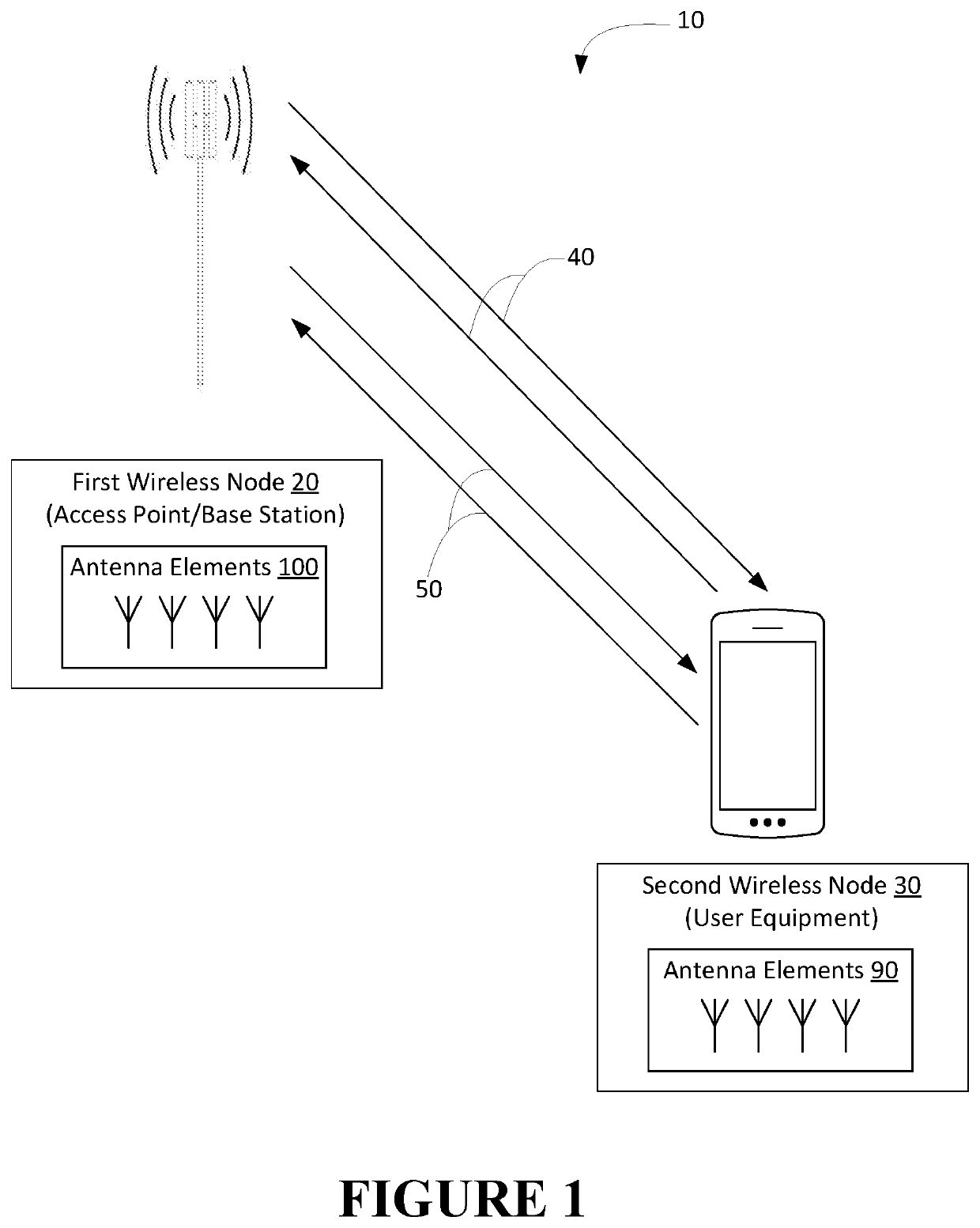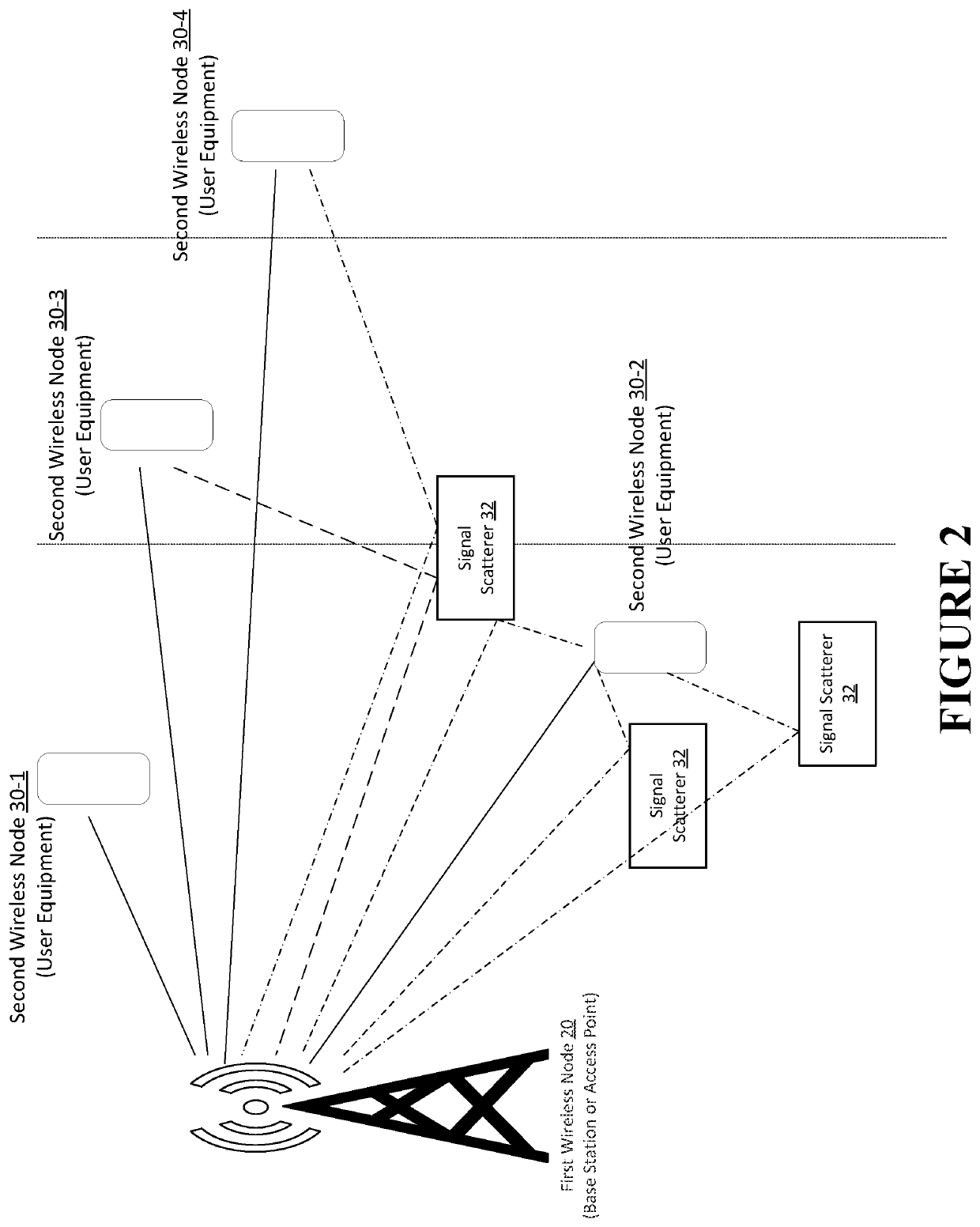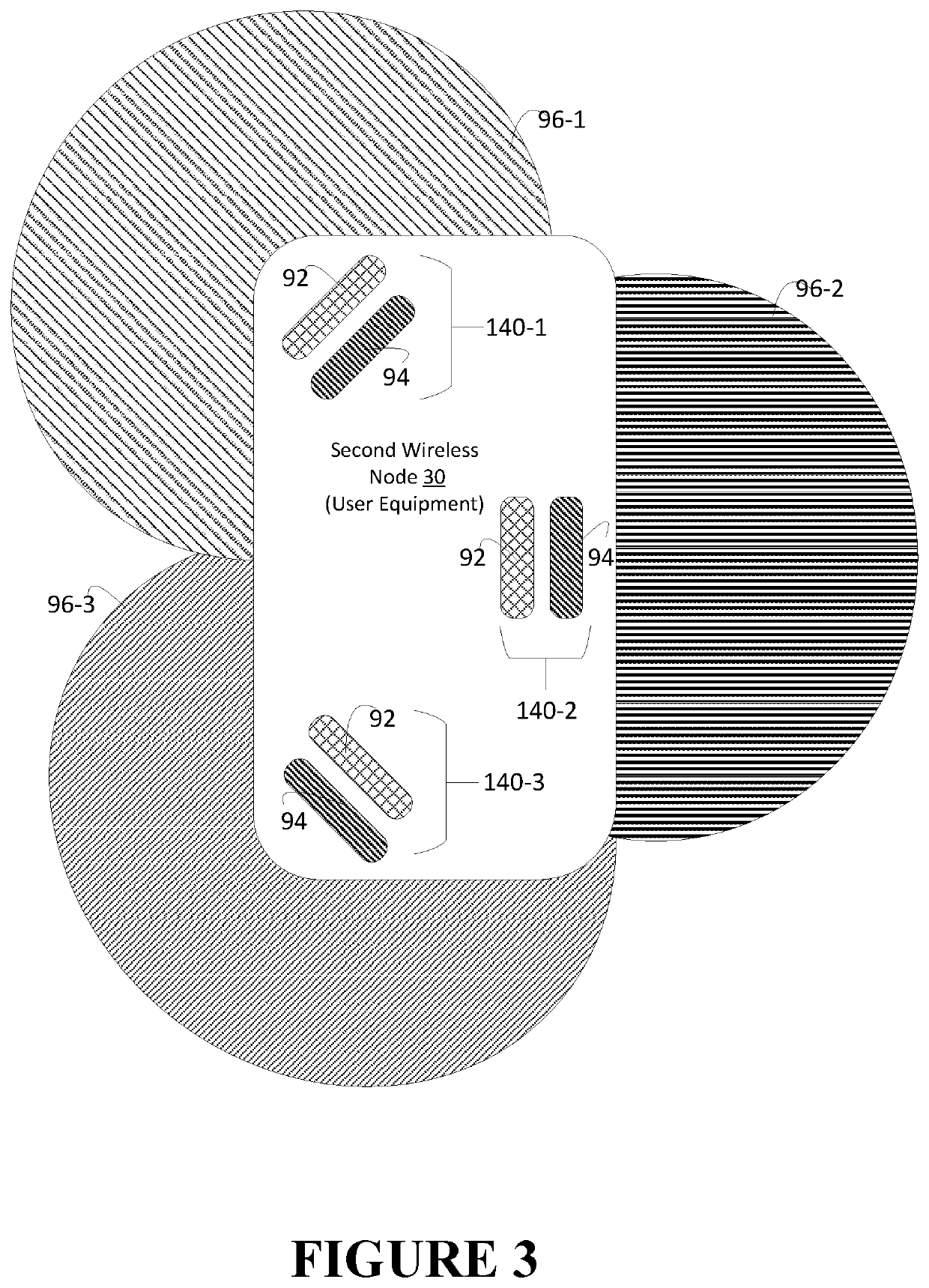Adaptive antenna configuration
a technology of antenna configuration and adapter, applied in the field of mobile telecommunications, can solve the problems of ghz sampling rate, less than optimal beam configuration, need for beam management, etc., and achieve the effect of reducing the frequency, reducing the cost of operation, and saving battery power
- Summary
- Abstract
- Description
- Claims
- Application Information
AI Technical Summary
Benefits of technology
Problems solved by technology
Method used
Image
Examples
Embodiment Construction
[0037]Embodiments of the present invention now may be described more fully hereinafter with reference to the accompanying drawings, in which some, but not all, embodiments of the invention are shown. Indeed, the invention may be embodied in many different forms and should not be construed as limited to the embodiments set forth herein; rather, these embodiments are provided so that this disclosure may satisfy applicable legal requirements. Like numbers refer to like elements throughout.
[0038]A wireless node as used herein, may refer to user equipment (“UE”), such as a mobile terminal / device, an access point (“AP”) or a base stations (“BS”), otherwise referred to as an eNodeB (eNB), gNodeB (gNB) or the like. For the purpose of sending or receiving data, the UE may connect to a wireless local area network (“WLAN”) or a mobile communication network (including evolution of 3GPP) LTE releases and 5th Generation (“5G”) New Radio (NR) releases) comprising a plurality of APs and / or BSs.
[003...
PUM
 Login to View More
Login to View More Abstract
Description
Claims
Application Information
 Login to View More
Login to View More - R&D
- Intellectual Property
- Life Sciences
- Materials
- Tech Scout
- Unparalleled Data Quality
- Higher Quality Content
- 60% Fewer Hallucinations
Browse by: Latest US Patents, China's latest patents, Technical Efficacy Thesaurus, Application Domain, Technology Topic, Popular Technical Reports.
© 2025 PatSnap. All rights reserved.Legal|Privacy policy|Modern Slavery Act Transparency Statement|Sitemap|About US| Contact US: help@patsnap.com



